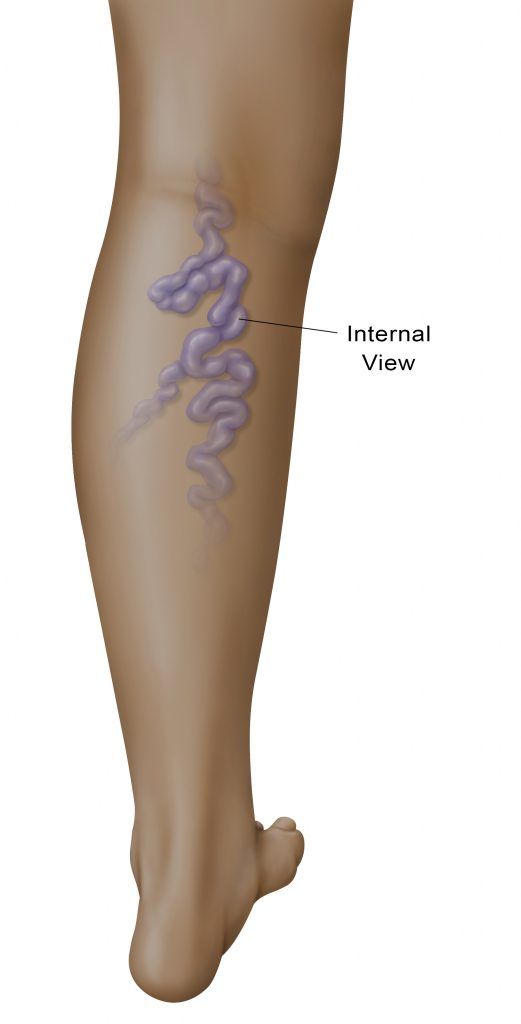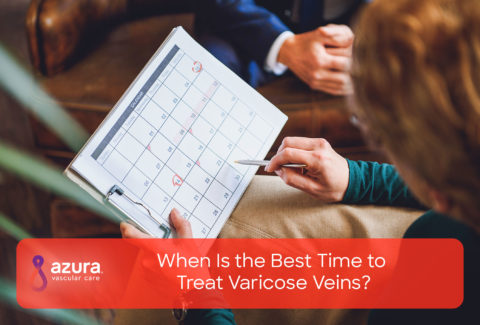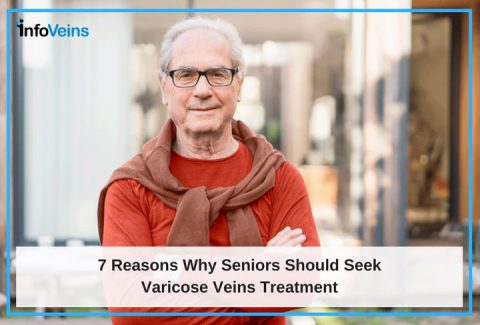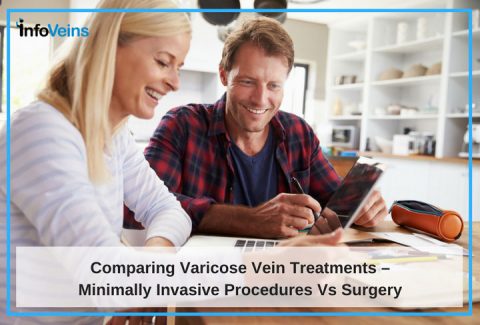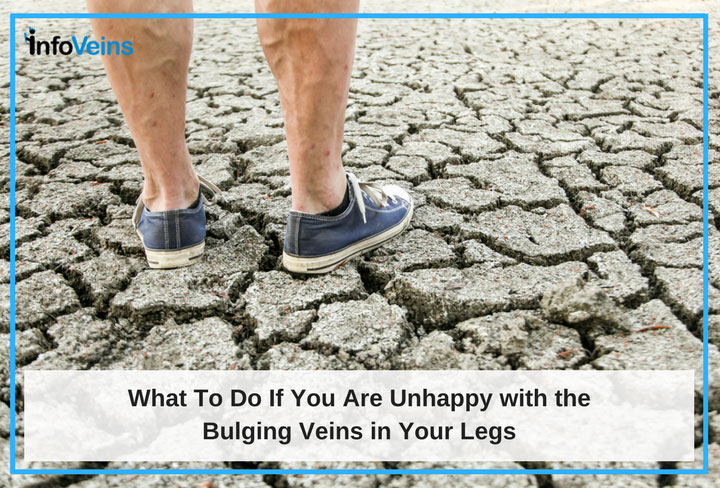
Close to 30% of adults suffer from varicose veins i, or those unsightly bulging veins in legs. Varicose veins appear under the skin and are due to weak one-way valves in your veins that, when functioning properly, are supposed to keep the blood from flowing backwards.ii When these valves become incompetent, blood backs up and increases stress on the vein walls. Eventually, the vein can enlarge, creating what’s known as a varicose vein.
While it’s not uncommon for those with varicose veins to be self-conscious about their appearance, there are actually other reasons to seek treatment. The main reason many people consider varicose vein treatment may be to improve the appearance of their legs, however, there are other, potentially severe, problems caused by varicose veins, particularly if you do not take steps to treat them.
Varicose veins can cause:
- A feeling of heaviness or throbbing
- Swelling
- Itching
- Changes in the color of the skin
- Muscle cramps
- Serious complications such as blood clots, problems with bleeding from an injured vein or sores that do not heal
Treatment options for varicose veins range from simply changing your habits, to minimally invasive alternatives to surgery, to surgery. If you’re unhappy with your varicose veins, it’s time that you learn about your options.
How to Treat Bulging Veins in Legs
Lifestyle Changes
In some cases, you can begin to get relief from the appearance and symptoms of varicose veins by changing some of your habits. Here are some things you can start to do right away that may help how your legs look and feel:
- Get moving – Regular physical activity, such as walking, can help keep the blood moving in your legs and decrease pressure on the veins. If you have a job that requires you to sit or stand for long periods of time, finding ways to change positions and move around can help.
- Lose weight – If you are overweight or obese, losing excess weight might help you get relief by decreasing the pressure that the added weight puts on your veins.
- Get your legs up – Elevating your legs above the level of your heart for 30 minutes, 4 times a day, may help relieve some of the pressure on your veins.iii
Wear Compression Stockings
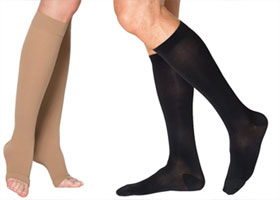
These special elastic socks apply pressure to the outside of the leg and prevent the veins from expanding and the blood from pooling. They can also decrease swelling.
Compression stockings can be purchased from local drug or retail stores. Or, with a prescription, you can have them made specifically for you. Your doctor can specify what strength of compression is needed depending on the severity of your leg symptoms. Most of the time, these socks should be put on right after you wake up in the morning and taken off at bedtime. Ask your doctor what kind of compression stockings will be best for you. Your insurance may require you try compression stockings before pursuing other types of treatments.
If you continue to have symptoms, even after making habit changes and wearing compression stockings, it may be time to consider surgery or minimally invasive treatments.
Surgery
Surgery has been a treatment for varicose veins for a long time. The surgical procedure, varicose vein ligation and stripping, involves tying off the veins and then stripping, or pulling out, some of the larger veins. Potential complications from surgery can include bleeding, pain and infection. You should understand that varicose vein surgery isn’t always 100% successful, either. The varicose veins can come back.
Minimally Invasive Treatments
At one time, surgery was the only option for the treatment of varicose veins. And, while surgery does still have its place as a treatment in certain cases, you should know that there are less invasive options that result in less pain, less complications and quicker recovery times.iv You may be a candidate for a minimally invasive treatment option if your varicose veins are the right size and in the right location and you do not have any medical conditions that would make any of these procedures unsafe for you. These procedures, which can be done in an outpatient setting, include:
- Sclerotherapy – A solution that will scar the veins is injected directly into the bulging leg vein. Now that the inside of the vein is damaged, the vein will seal off and blood will be forced to flow through other, healthier veins. With time, the scarred varicose vein will fade away, as it is absorbed by the body.
- Endovenous ablation – A catheter, or a thin tube, is inserted through a small nick in the skin, and heat created by either a laser or radiofrequency waves is applied to the inside of the vein. This results in the inside of the vein closing off and the vein eventually dissolving.
- Microphlebectomy – Small nicks are made in the skin over the varicose veins and the veins are pulled out with a special tool.

Minimally invasive procedures typically take about an hour, and other than needing to wear compression stockings, you can usually go back to almost all of your regular activities right away.v If you need to have surgical vein ligation and stripping, it may take up to 4 weeks to fully recover.vi Now that you have a better sense of the treatment options for varicose veins, maybe it’s time that you consider taking the first step.
RELATED: What Happens if I Don’t Treat My Varicose Veins?
Are you thinking about a minimally invasive option to treat your varicose veins? Make an appointment with a vascular specialist in your area who specializes in the minimally invasive procedures used to treat varicose veins.
Sources:
i Lin, F., Zhang, S., Sun, Y., Ren, S., Liu, P., The Management of Varicose Veins. Int Surg, 2015. 100: p. 185-189. https://www.ncbi.nlm.nih.gov/pmc/articles/PMC4301287/
ii Mayo Clinic. Varicose Veins Overview. http://www.mayoclinic.org/diseases-conditions/varicose-veins/home/ovc-20178078 (updated 1/22/2016, accessed 11/30/2016)
iii Piazza, G., Varicose Veins. Circulation, 2014. 130: p. 582-587. http://circ.ahajournals.org/content/130/7/582.long
iv Spinedi, L., Uthoff, H., Partovi, S., Staub, D. Varicosities of the lower extremity, new approaches: cosmetic or therapeutic needs? Swiss Med Wkly, 2016. 146:214360 https://www.ncbi.nlm.nih.gov/pubmed/27878794
v Radiologyinfo.org, Varicose Vein Treatment (Endovenous Ablation of Varicose Veins). http://www.radiologyinfo.org/en/info.cfm?pg=varicoseabl (reviewed 3/21/2016, accessed 12/30/2016)
vi National Heart, Lung and Blood Institute, How Are Varicose Veins Treated? https://www.nhlbi.nih.gov/health/health-topics/topics/vv/treatment (updated 2/13/2014, accessed 12/30/2016)
